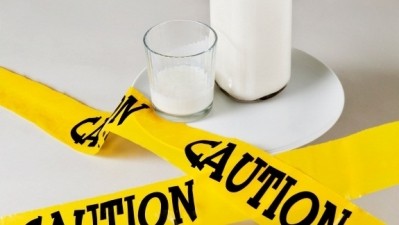Mocon launches yeast and mould test method for dairy

The GreenLight detection platform reduces testing times by up to 80% compared to agar plate methods, enabling dairies to release product in 18 hours.
GreenLight instruments have traditionally been used to screen for presence and number of aerobic microbes.
The test method boosts capabilities in total viable count (TVC) and “indicator organisms” for bacteria, using its oxygen-depletion sensor and automated reader.
It achieves results for yeast and mould using the same automated reader and APCheck oxygen sensing vials as for bacteria.
The user adds a selective media to the vial. The GreenLight system is loaded with mixtures of bacterial and other tests and controlled automatically.
Yeast and mould in dairy
Alan Traylor, business manager, microbial detection said yeast and mould is very common in yogurts due to contamination of fruits that add flavour and packaging deficiencies but less common in liquid milk.
“For a highly sensitive test, 24 tests [can be run] concurrently. We do not identify species of yeast or moulds. All readouts are automatically displayed as red or green indicators on the PC screen without the need to count colonies.”
Traylor said the percentage of firms using rapid methods was still low.
“The issue of fake positives and negatives is interesting in itself because we believe that traditional agar methods suppress real positives due to the lack of sensitivity. Therefore our system is highlighting positives that we not seen before.”
When asked about designing a system for yeast and mould compared to microbes, he said the difference is usually the media used to dilute the product in and the incubation temperature.
Traynor added it will soon be releasing new methods for coliforms and enerobacteriaceae in dairy products and that Arla Foods was still using GreenLight instrumentation to test ESL milk.
Test methodology
Mocon developed a new test methodology validated by Professor Lubomir Valik, of the Slovak University of Technology in Bratislava.
“Because traditional agar plate methods require as long as five days to deliver yeast and mold detection tests results, dairy products typically have already entered the distribution channel. Positive results can trigger a product recall, which can negatively impact the corporate bottom line and brand image. With GreenLight’s significantly shorter test cycle, it becomes more feasible for dairies to hold product onsite until test results are received. Should results come back positive, no recalls are necessary.”
Traynor said Valik is a respected dairy spoilage scientist and it wanted an independent third party assessment. AOAC and AFNOR validations are still needed for the method.
The testing capability can serve as an early warning of an issue with the packaging line or the package structure, said the firm.
The system provides quantitative on-screen data and pass/fail testing in automated mode.
Laboratory personnel benefit from shorter preparation times as the number of dilutions are minimised which reduces costs and decreases the chance of error.
Since the test protocol does not rely on plate counting, errors are reduced while quantitative information is saved to a secure database for statistical process control or trend analysis.















